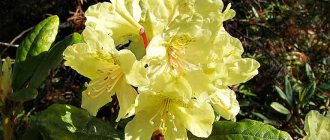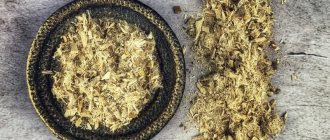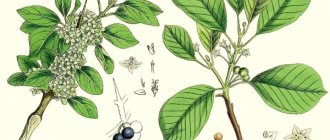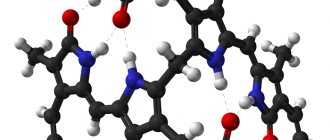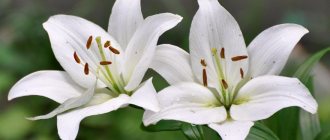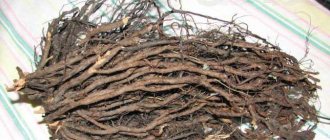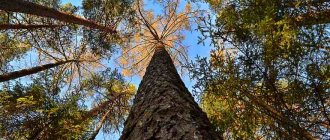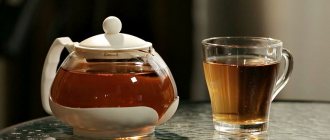Description of the plant
White willow is a tall, spreading tree that is found throughout Europe, Asia Minor (except the Far North), Kazakhstan, Iran and North America. Trees form entire groves along roads; they also grow in public gardens, along the banks of rivers, reservoirs, on embankments, slopes, and even in the mountains. The trees grow up to 25 meters in height and with a crown diameter of up to 5 meters. Long flexible branches reach a length of 2-2.5 meters. Some long-lived trees are up to 100 years old. Other names are weeping willow, Babylonian willow, silver willow, willow, willow, broom.
Thanks to its thin flexible branches, the crown of the tree looks like moving lace . The leaves are shaped like a lanceolate knife, green on one side and silver on the other. This is especially noticeable when the white willow flutters in the wind. The tree blooms with small small flowers, collected in earrings, in early and mid-spring even before the leaves grow. Thanks to its beautiful openwork crown, the plant is often planted in parks, along river banks, alleys and roads.
Most of the medicinal components are contained in the bark of the tree. The composition revealed:
- active glycoside of salicylic acid – salicin;
- catechin-type tannins (10% to 15%) tannins;
- phenolic glycosides;
- resins;
- organic acids;
- vitamin C;
- flavonoids.
These same substances are found in large quantities in young tree branches, and in smaller quantities in leaves, catkins and old branches. Goat willow, a small spherical tree or shrub, has many of these medicinal properties.
Useful properties of white willow
Most of the beneficial properties that white willow has are due to the presence of salicin . It was the bark of this tree that was the raw material for the production of salicylic acid, better known as “aspirin”.
The most important components:
- Salicin is a glycoside with a pronounced bitter taste . Its properties are similar to synthetic acetylsalicylic acid, but its effect is milder. It suppresses inflammatory processes in the body, relieves pain, lowers temperature, regulates sweating, relieves swelling and joint pain.
- Tannins are another component, the presence of which is associated with most of the medicinal properties of plants. They are able to compact and strengthen protein molecules in the mucous membranes, which makes them practically impenetrable to viruses and bacteria. They bind and remove toxins and harmful substances from the body, so they are often used for poisoning. When consuming tannins, mucus secretion decreases, and intestinal motility slows down greatly, which is important for prolonged diarrhea. Tannins are also used externally to treat dandruff and reduce damage from sunburn.
Thanks to their components, willow preparations have the following effects:
- astringent;
- antiseptic;
- antibacterial;
- painkillers;
- antipyretic;
- hemostatic.
Willow - medicinal properties
Since time immemorial, magical properties have been attributed to this valuable shrub. White willow bark has antipyretic (due to the content of acetylsalicylic acid), astringent, anti-inflammatory, diuretic, anthelmintic and diuretic effects. Tea made from fresh leaves relieves fatigue; using a willow broom in a bathhouse treats osteochondrosis and gout. The quinine it contains is a powerful anti-malaria agent.
Positive results have also been achieved in the treatment of gastrointestinal diseases and diarrhea. Willow is also used externally: for rinsing the mouth, throat, douching, for varicose veins, sweating feet, and skin diseases. The plant is used as a sedative, anti-fever and wound-healing agent, and a weak decoction of the bark treats weakened and brittle hair, saturating it with all the necessary substances.
Contraindications
Despite the large list of medicinal properties, white willow bark also has a number of contraindications:
- the presence of a large amount of salicylic acid can cause fetal pathology, so it should not be used by pregnant women;
- like aspirin, it should not be prescribed to children under 16 years of age;
- prohibited for use with bradycardia and chronic constipation;
- It is not recommended to take it during exacerbation of gastritis.
Pronounced diuretic properties can cause intensive removal of beneficial salts from the body. The loss of salts must be compensated by taking special vitamin complexes. To avoid unwanted reactions of the body, taking medications must be agreed with a doctor.
The healing properties of willow
The beneficial properties of willow bark cannot be overestimated. Among them: antipyretic; hemostatic; anti-inflammatory; astringent; wound healing; choleretic; soothing; improves digestion; promotes dilation of blood vessels; diuretic; antibacterial; antifungal; expels worms; relieves fatigue and headaches; eliminates sweating; stops diarrhea.
Treatment with willow bark is effective for conjunctivitis, inflammation of the gums and throat, diseases of the urinary system, inflammation of the female genital organs, disorders of the functioning of the stomach and intestines. It has powerful analgesic properties, helps get rid of headaches, joint pain, menstrual syndrome, pain due to rheumatism and gout. The antipyretic effect will help reduce fever during fever, colds, and inflammatory diseases. Willow preparations effectively stop bleeding and have bactericidal properties.
Willow bark is also actively used for cosmetic purposes - to treat dandruff, hair loss, eliminate warts, acne, sweating, and skin diseases.
Helpful information
Applications in cosmetology
White willow is a female tree endowed with the gift of creation and magical properties. It is included in the Druid horoscope and is dedicated to the Moon Goddess. So, according to all the canons of magic, white willow is ideal for maintaining female beauty.
In homemade masks, white willow is most often used in the form of a ready-made dry bark extract . But it should be remembered that the content of salicylic acid in different packages can vary greatly: from 15 to 80%. This affects the healing properties of the extract.
Mask for problem skin:
- take dry extract and bran in a ratio of 1:10;
- dilute the mixture with strongly brewed green tea to a paste;
- apply the mixture to affected or inflamed areas;
- wash off after complete drying.
To enhance the effect, you can add a little crushed streptocide to the mixture. Instead of bran, it is good to use white pharmaceutical clay. If you add a few drops of lemon juice to the mask, it will also become whitening.
Do the mask no more often than once every three days, otherwise you may get burned or dry out the skin too much. If irritation occurs, you should stop using willow bark extract and consult a dermatologist immediately.
A steam bath for cleansing oily and porous skin is prepared as follows:
- Pour 1 tablespoon of the prepared bark extract into an enamel pan, pour in a liter of boiling water, let cool;
- heat the broth over low heat until the liquid begins to evaporate;
- tie your hair with a scarf, cover your head with a towel and bend over the pan for 6-8 minutes;
- Wipe your face with a clean napkin and apply a mask for your skin type.
You can also use fresh willow leaves for a cleansing mask. To do this, pour boiling water over the washed leaves, place them between two layers of gauze and place the mask on your face. After cooling, remove the gauze.
The powder, diluted to a pulp, can be used as a peeling. For thin skin, it is better to dilute peeling not with water, but with glycerin.
Additionally:
- White willow preparations have long been used as a means of getting rid of warts and papillomas.
- Bark extract is included in cosmetic products that stimulate hair growth . White willow is included in shampoos to strengthen weakened hair, especially after long illnesses.
- Willow extract in creams helps fight excess oily skin and clogged pores. Thanks to the natural components of the bark, masks and tonics gently cleanse the skin of excess sebum, open pores, exfoliate dead cells, and stimulate the restoration of collagen fibers. Ginger is endowed with similar properties, which successfully fights not only acne, but also helps remove small expression wrinkles.
Use in everyday life
- Willow tannins were used in the tanning of leather and the production of fishing gear.
- A concentrated decoction of the bark was used to dye fabrics brownish-red.
- The flexible branches were used to weave fences and baskets.
Use in cooking
Willow is one of the earliest honey plants . Its honey is rarely obtained in large quantities, so it is very expensive.
In the Caucasus, young catkins were used to make an intoxicating drink, and the leaves were added to tea, while the herb fireweed has long been a traditional component of tea in many countries of the Northern Hemisphere.
The use of medicinal properties of willow in folk medicine
The unique medicinal properties of white willow are used in traditional and folk medicine, where the bark, leaves, juice and its inflorescences have long been used. Preparations and remedies made from willow bark are of particular benefit.
White willow bark
It is difficult to list all its healing capabilities, here are just a few recipes used in folk medicine:
- Recipe No. 1. Tea and infusion for fever, rheumatism, diarrhea, hypotension, radiculitis: a teaspoon of raw material is poured into a glass of boiling water and left for several minutes. Drink 2 glasses daily. Or infuse a triple dose of raw materials in boiling water in a half-liter thermos and take 3 times.
- Recipe No. 2. For erysipelas and fungal diseases: pour boiling water over a glass of dry raw material until it is completely covered with liquid. Let it stand for half an hour and pour it in filtered form into warm water, where you can make baths. Or moisten a cloth with it for compresses.
- Recipe No. 3. To relieve fever: boil a spoonful of the raw material in a glass of boiling water for 20 minutes, drink a cooled spoonful three times a day.
- Recipe No. 4. For hyperthyroidism: mix the coals after burning willow branches with a double dose of honey and take a quarter glass three times a day, half an hour before meals.
- Recipe No. 5. For seborrhea and hair loss: boil two tablespoons of willow bark and burdock root in a liter of water for half an hour. Use when washing your hair.
- Recipe No. 6. Compress for warts: pour crushed coals obtained from burning willow branches with vinegar until it becomes pasty. Use several times until they come off.
White willow leaves
- Recipe No. 1. For prostatitis: boil a spoonful of chopped branches with leaves for several minutes in half a liter of boiling water. Drink half a glass chilled, ten minutes before meals, three times a day.
- Recipe No. 2. To soften calluses: foot baths with steamed willow leaves daily until they go away.
- Recipe No. 3. To relieve fever and intestinal colic: leave a spoonful of fresh leaves in a glass of boiling water for half an hour and drink in three doses.
- Recipe No. 4. For insomnia and rheumatic pain, take a bath with an infusion of leaves before bed.
White willow extract and juice
Willow bark juice is used in cosmetology to cleanse facial skin, relieve inflammation and smooth out shallow wrinkles. For this purpose, compresses are made from it. A mixture of this juice with pomegranate decoction and rose oil is used in Eastern medicine to treat otitis media. It is also useful for hair; when rubbed into the scalp, it grows better and dandruff disappears.
Willow bark extract is included in various preparations used for overweight, heart pathologies and diabetes. It treats problem areas of the skin, normalizes fat secretion and gives facial skin a well-groomed appearance. The pharmaceutical drug is used three times a day, half a teaspoon.
How to prepare and store white willow
Harvesting bark:
- White willow raw materials begin to be harvested at a time when the movement of sap has already begun, but the first leaves have not yet blossomed;
- shoots of a 2-3 year old mature tree are suitable for collecting raw materials;
- carefully cut off the lateral shoots with a hatchet, leaving at least 10 cm from the ground;
- the bark from large central trunks cannot be removed, otherwise the tree may dry out;
- peel off the outer layer with a knife and dry until a characteristic dry crackle occurs;
- When drying, the raw materials must be covered with a thin layer and constantly stirred to avoid the appearance of mold fungi.
Earrings are collected during flowering and dried in a cold place.
White willow is a familiar plant to us. Share in the comments if you have ever taken decoctions or used extracts in cosmetology.

